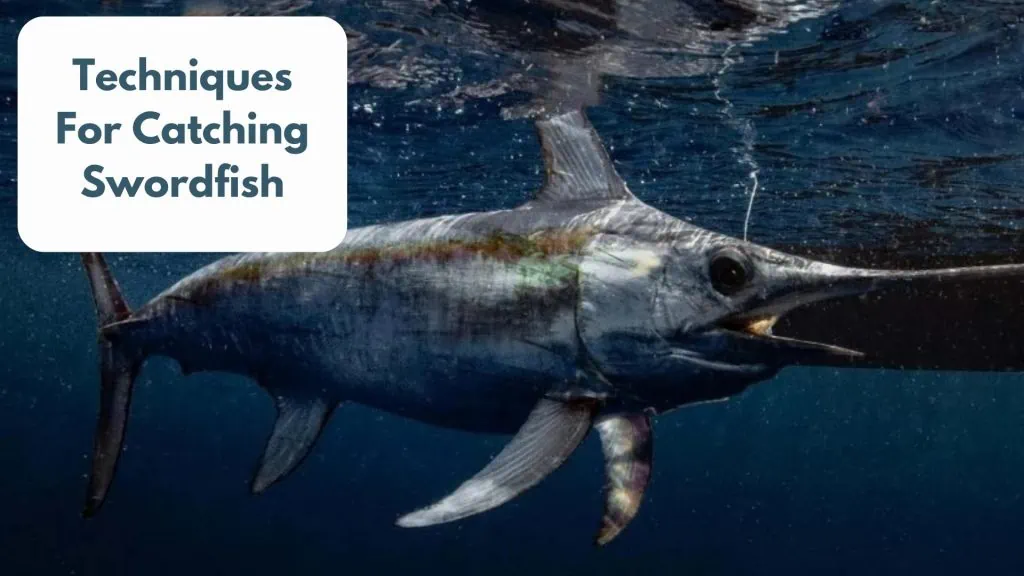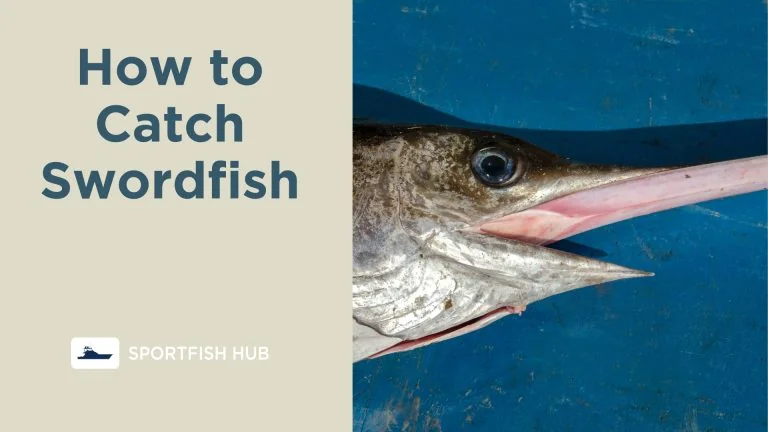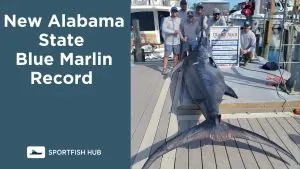Swordfish are one of the most sought-after big game fish for anglers around the world. Known for their immense size, fighting power, and tasty meat, landing a swordfish is considered one of the greatest challenges and rewards for passionate fishermen.
This guide will provide everything you need in order to know how to catch swordfish.
Our article on the differences between Swordfish and Marlin might also interest you.
Fishing For Swordfish
The first step is locating swordfish, which isn’t easy hence why they call it Fishing! That being said, here are some tips I have gathered over the past few years on where to catch swordfish:
- Offshore waters: Swordfish are pelagic and found in deep ocean waters. Prime spots include areas with seamounts, ledges, ridges, and warm currents that aggregate baitfish.
- Temperate and tropical waters: They are found worldwide in temperate and tropical oceans between 45°N and 45°S latitudes. This includes offshore waters of the United States, Australia, Mexico, Chile, Brazil.
- Swordfish depth: During the day they are found at depths of 650-3,300 feet. At night, they rise up to feed at depths of 130-650 feet.
- Water temperature: Ideal temperature range is 64-73°F. In colder months they migrate towards warmer equatorial waters.
- Current rips and color changes: Look for current rips, eddies, and color/temperature breaks which congregate bait.
Swordfish Gear
Having the right swordfishing gear is critical for success, because this isn’t your typical billfish:
- Rods: A 5-7 foot heavy stand-up rod rated for 80-100 lbs line with a soft tip is ideal. This allows detecting bites at depth while having strength to battle large fish.
- Reels: Choose a heavy duty big game reel with high max drag like Penn International or Shimano Tiagra loaded with braided line. They should hold 500+ yards of 80-100 lb test line.
- Line: Braided line such as PowerPro gives strength to battle swords and zero stretch for drive hooksets. Use a topshot of 100-150 lb fluorocarbon leader.
- Hooks: Strong 16/0 or 20/0 circle hooks like the Mustad 39960D are commonly used. Circle hooks result in better hookups when dropped back.
- Rigs: Use non-offset circle hooks on 400-500 lb wind-on leaders attached to pyramid weights or breakaway rigs.
Swordfish Gear Checklist
| Gear | Description |
|---|---|
| Stand-up big game rods | 5-7 foot heavy rods rated for 80-100 lbs line with a soft tip |
| Big game reels with heavy drag | Penn International, Shimano Tiagra |
| Braided line – 80-100 lb test | PowerPro, Jerry Brown, etc |
| Heavy fluorocarbon leader – 100-150 lb | Topshot leader material |
| Large circle hooks – 12/0-20/0 | Mustad, Owner, Gamakatsu |
| Gaffs & harpoons | For boating and securing fish |
| Harnesses & fighting belts | For safely battling large fish |
| Glow sticks/cyalume | For attracting swordfish at night |
| Pyramid weights or breakaway rigs | For dropping baits to depth |
Baits for Swordfish
Choosing the right bait is key to getting bites:
- Squid: Squid is a top swordfish bait. Use large whole squid or split squid strips. Tougher than fish baits.
- Mackerel: King and Spanish mackerel are excellent baitfish for swords. Strip out belly sections.
- Tunas: Yellowfin, blackfin, skipjack, and frigate tuna bellies or heads all work well.
- Marlin: Strip baits from blue marlin or spearfish bellies or use chunks of leftover marlin.
- Mahi: Dolphinfish bellies or heads make good bait. Fleshy and oily texture.
Top Natural Swordfish Baits
| Bait | Notes |
|---|---|
| Whole squid or squid strips | Tough and durable bait |
| Mackerel or tuna bellies | Oily and appealing fish baits |
| Marlin scraps | Chunks of blue marlin work well |
| Mahi mahi chunks | Fleshy dolphinfish cut baits |
- Artificials: Large squid or fish imitation jigs, rubber squid skirts, and plastic lures will also produce.

Techniques For Catching Swordfish
Use these techniques to hook and land swords:
Daytime:
- Drop baits to depths swordfish cruise using weights from 16-32 oz.
- Let baits drift until getting a bite. Leave reels in freespool.
- Strike immediately when tight and reel fast to set the hook.
Nighttime:
- Use glow sticks, lights, or cyalume to attract swordfish to baits.
- Drift baits near the surface suspended under floats and balloons.
- When bit, pull back sharply and keep reeling to set hook.
Deep Dropping:
- Use electric or manual reels to drop baits over 1,000 feet deep.
- Watch rod tips for “ticking” bites. Drop back to feed the fish.
- Quickly strike and pull back to set hook at depth. Reel fast.
Kite Fishing:
- Fly multiple hookless teaser lures from kites to attract swords.
- Present live and dead baits from deep under the teaser spread.
- Let swords eat baits as long as possible before striking.
Drifting:
- Attach weights and long leaders to baits. Slowly drift or stir baits.
- Let drifting baits sink to target depth then re-drift area.
- Set the hook as soon as you see rod loads up. Keep steady pressure.
Check out our article that discusses which fish tastes better, Marlin or Swordfish.
Fighting and Landing Swordfish
Use these tips to subdue swords once hooked:
- Maintain steady, heavy pressure. Don’t slack the line.
- Let the drag do the work. Avoid thumbing drag.
- Pump and reel fast to gain line during lulls in fight.
- Be prepared for powerful runs, circles, and surface jumps.
- Use a heavy gaff, harpoon, or tail rope to secure boatside.
- Dispatch quickly once landed.
Catching a swordfish takes patience, preparation, and persistence. Follow this guide to experience one of the greatest thrills in offshore sportfishing!











